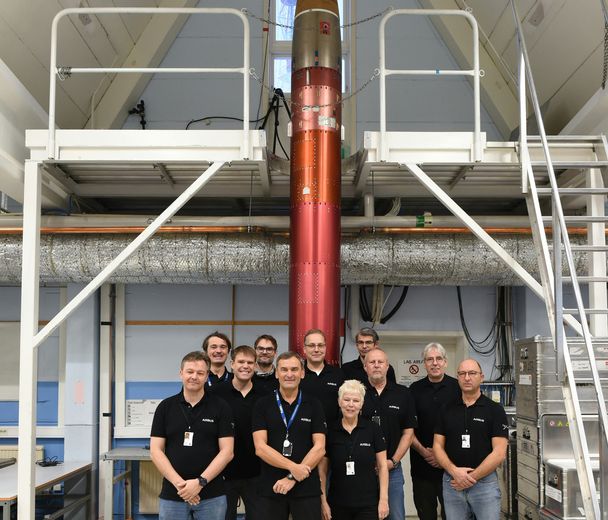TEXUS-56: research mission accomplished!

Airbus has completed another successful space mission. On 15 November, the TEXUS-56 rocket completed a scientific research flight.
The research rocket took off at 10:35 CET from Kiruna, north Sweden, and gave the scientists involved six minutes of research in microgravity. After the parachute landing of the rocket, the experiments were recovered by a helicopter team. The research teams will now evaluate the results.
"Mission accomplished! Our TEXUS team from Bremen has once again done a great job for our customers, ESA and DLR," enthuses project manager Detlef Wilde. "With TEXUS, we offer very short preparation times, integrate the payloads and take care of the complete mission execution, including procurement of the rockets - a service that our customers love to use".
Five experiments were on board the research rocket
- The ’PERWAVES’ experiment from McGill University in Montreal, Canada, involved investigating processes known as ’discrete burns’ of solid fuels. In this case, the experiment investigated the combustion process of metal powder and how the efficiency of combustion processes can be significantly improved. Combustion processes can be observed better in microgravity than on Earth.
- Another experiment (ICAPS) from the Université Libre de Bruxelles and the TU Braunschweig simulated the early phases of proto-planet formation, with the investigation of interactions between the smallest cosmic particles and their agglomeration.
- The InSituKris experiment from the University of Freiburg performs in-situ observations of foreign phase particles in liquids and their interaction with the crystallization front. This research serves to improve the production and performance of modern solar cells.
- E4T (Ethernet for TEXUS) is a joint technology experiment from Airbus and OHB to improve TEXUS data communication, on board and with Earth, using commercial ‘industry 4.0’ data processing technologies.
- The icing on the cake was the small student experiment, AEGIS, from the Sint Pieters College in Belgium for measuring X-rays and gamma rays in low space up to 260 km altitude. Thus, TEXUS 56 was also involved in the training of young scientists.
Proven research programme
In the science programme TEXUS (Technological Experiments in Zero Gravity), scientists conduct biological, material science and physical experiments under space conditions with research rockets. It is the world's most successful and longest lasting rocket programme for scientific and technological experiments in zero-gravity. TEXUS also plays an important role in the preparation of experiments for the International Space Station, ISS.
On average, one TEXUS campaign takes place every year. The rockets launch from Esrange near Kiruna in north Sweden. In ballistic flight they reach a summit height of about 260 kilometres. For six minutes, an approximate weightlessness is reached, which is only about one ten thousandth of the Earth’s normal gravity. The rocket’s payload then lands by parachute and is salvaged by helicopter.
During this time, the experiments are located in autonomous modules within the rocket, one on top of the other. During the flight, the scientists can directly control and monitor their experiments from the ground using telecommand and video transmission. The data is collected during the flight by telemetry or after recovery of the scientific payload.